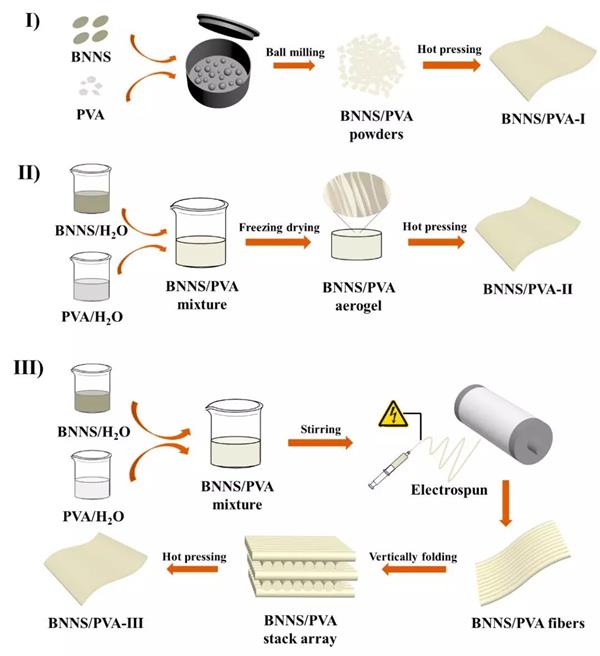Xutong Yang, Yongqiang Guo, Yixin Han, Ying Li, Tengbo Ma, Minjiao Chen, Jie Kong, Jiahua Zhu* andJunwei Gu*. Significant improvement of thermal conductivities for BNNS/PVA composite films viaelectrospinning followed by hot-pressing technology. Composites Part B-Engineering, 2019, 175: 107070.2018IF=6.864. (1区/Top期刊:复合材料领域顶尖期刊).
Abstract:Research and development on polymer composites with high thermal conductivities and ideal thermal stabilities have become one of the hot topics in functional composites. In this work, boron nitride nanosheets/polyvinyl alcohol (BNNS/PVA) thermally conductive composite films were respectively prepared from ball milling (BNNS/PVA-I), directional freeze-drying (BNNS/PVA-II) and electrospinning technology (BNNS/PVA-III), followed by hot-pressing method. BNNS/PVA-III thermally conductive composite films had better comprehensive properties than that of BNNS/PVA-(I-II) composite films. Thermal conductivity coefficient in vertical direction (λ⊥) of the BNNS/PVA-III composite films with 30 wt% BNNS was 1.031 W/mK, obviously higher than that of BNNS/PVA-I (λ⊥ of 0.573 W/mK) and BNNS/PVA-II (λ⊥ of 0.694 W/mK), respectively. And the λ in parallel direction (λ∥) was significantly enhanced to 18.630 W/mK, increased by 3101.0% and 1437.1% compared to that of BNNS/PVA-I (λ∥ of 0.582 W/mK) and BNNS/PVA-II (λ∥ of 1.212 W/mK), respectively. Meantime, the glass transition temperature (Tg) and heat-resistance index (THRI) of the BNNS/PVA-III thermally conductive composite films with 30 wt% BNNS was 42.7 °C and 144.5 °C, 7.0 °C and 1.9 °C higher than that of pure PVA matrix, respectively.
